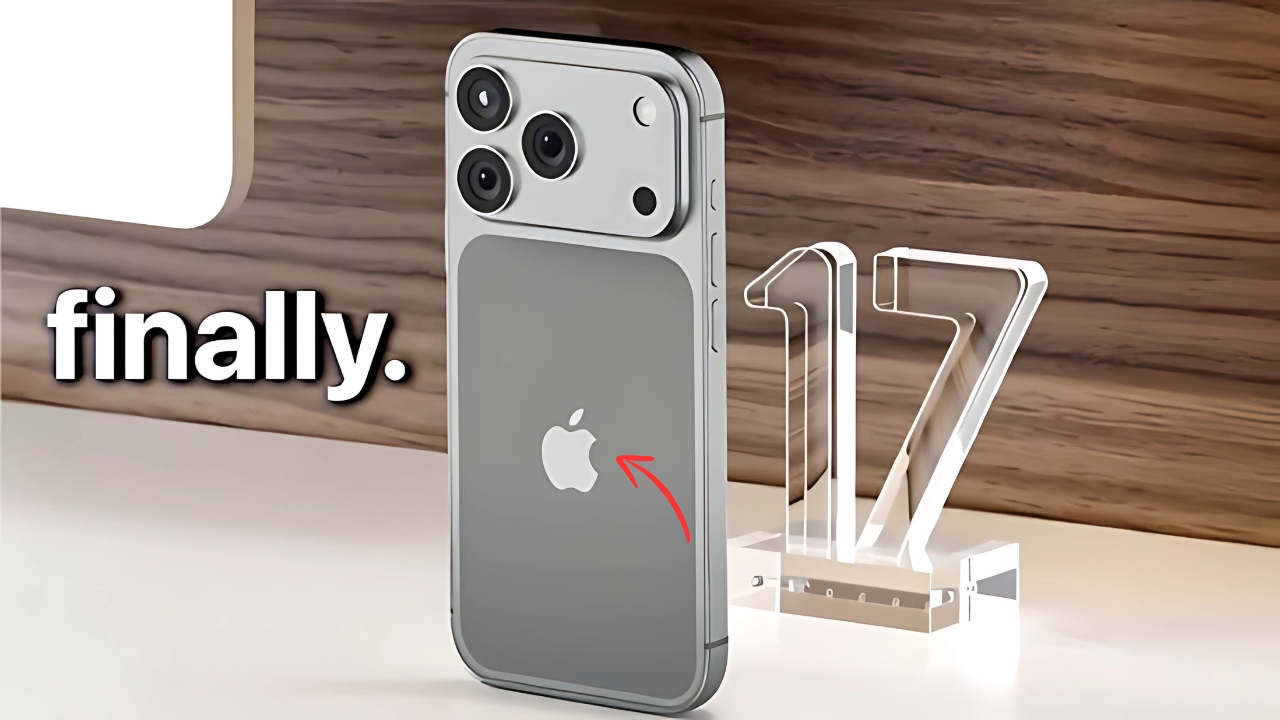iPhone 17 : Apple’s about to pull off something nobody expected. The iPhone 17 series isn’t just another incremental upgrade – it’s a complete reimagining of what an iPhone lineup should look like. And the star of the show? A phone so thin it shouldn’t technically exist.
Design Gamble That Defies Engineering Logic
The iPhone 17 Air measures just 5.5mm thick without the camera bump. To put that in perspective, most credit cards are thicker. Apple’s engineering team apparently looked at physics and said “nah, we’ll figure it out.”
The regular iPhone 17 grows to 6.27 inches, basically stealing the Pro’s screen size while keeping the standard price point. Smart move, honestly. Meanwhile, the Pro models get completely redesigned with something Apple hasn’t done in years – they’re ditching the titanium frames.
Yes, you read that right. After two years of marketing titanium as the premium standard, Apple’s going back to aluminum for the Pro models. The reasoning involves a half-glass, half-aluminum back design that supposedly improves durability while maintaining wireless charging. It’s either brilliant engineering or cost-cutting disguised as innovation.

Display Revolution That Should’ve Happened Years Ago
Finally – and I mean finally – Apple’s bringing 120Hz ProMotion to every iPhone 17 model. No more artificial feature gatekeeping between standard and Pro models. Every single device gets smooth scrolling and responsive touch that Android phones have offered for years.
The entire lineup uses LTPO OLED displays, though always-on functionality might still remain Pro-exclusive. Samsung’s high-performance M14 OLED panels power the enhanced display experience across all models, suggesting Apple’s serious about eliminating quality gaps.
Bezels shrink even further, building on the impressive work done with iPhone 16 Pro models. The Air particularly benefits from ultra-thin bezels that maximize screen space within its impossibly slim profile.
Performance Hierarchy That Makes Zero Sense
Here’s where Apple’s strategy gets confusing. The base iPhone 17 keeps the same A18 chip from iPhone 16 models with 8GB RAM. After a full year, that’s essentially no performance improvement, which feels weirdly conservative for Apple.
The iPhone 17 Air gets the new A19 chip with 12GB RAM, making it more powerful than the “standard” model despite being positioned as a design-focused device. Pro models receive A19 Pro processors with 12GB RAM and TSMC’s latest 3nm manufacturing.
This creates a bizarre situation where the thin, design-oriented Air outperforms the regular iPhone 17 in every metric except price. Apple’s clearly betting that aesthetics matter more than traditional performance hierarchies.
Camera Overhaul That Changes Everything Visual
The Pro models undergo dramatic camera redesigns, abandoning the familiar triangular arrangement for large rectangular bumps spanning the device width. Early leaked images suggest an industrial aesthetic that either looks revolutionary or brutally functional, depending on your taste.
All iPhone 17 models double front camera resolution to 24 megapixels with improved six-element lenses. This enables better cropping and higher selfie quality across the entire lineup – a genuinely useful upgrade.
Pro models reportedly gain 48-megapixel telephoto lenses with 8x optical zoom, significantly extending photographic reach. There are whispers about additional Camera Control buttons and dedicated Pro camera apps, though these claims sound questionable at best.
Build Quality Choices That Raise Eyebrows
Apple’s material decisions seem counterintuitive after years of titanium marketing. The hybrid aluminum-glass construction on Pro models creates durability benefits while preserving wireless charging, but it challenges the premium positioning Apple has carefully cultivated.
Improved cooling systems address thermal management across all models, with vapor chamber technology specifically mentioned for Pro variants. These upgrades should prevent performance throttling during intensive usage scenarios.
Color Palette That Actually Shows Personality
The rumored colors bring genuine variety. Standard models get black, white, steel gray, green, purple, and light blue options. The Air keeps things minimal with black, white, light blue, and light gold choices.
Pro models go bold with orange and dark blue joining traditional black, white, and gray options. The Sky Blue finish reportedly matches MacBook Air aesthetics, while orange represents the most adventurous Pro color in recent memory.
Infinix Smart 10 Plus comes with ultra smooth display – design is classic
Pricing Strategy That Defies Logic
The iPhone 17 Air starts at $899, positioning it between the standard model ($799) and Pro ($1,099) despite superior performance. This creates a lineup where the design-focused device costs more but performs better than the “regular” option.
Component cost increases from tariffs may push all prices higher, though Apple will likely package increases with new features rather than explicitly blaming external factors.
iPhone 17 September Launch Timeline Stays Traditional
Apple’s expected to announce the series during September 8-10, with pre-orders beginning September 12 and availability starting September 19. This could be the last traditional fall iPhone launch before Apple splits releases between fall and spring starting in 2026.
The iPhone 17 Air represents Apple’s biggest design risk since the iPhone X. Whether it succeeds or fails will likely determine future iPhone strategies for years to come.